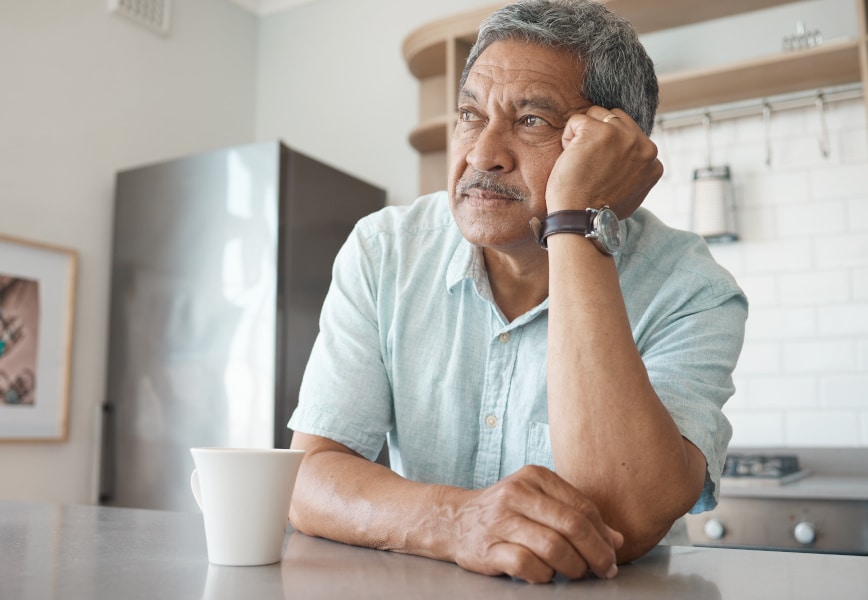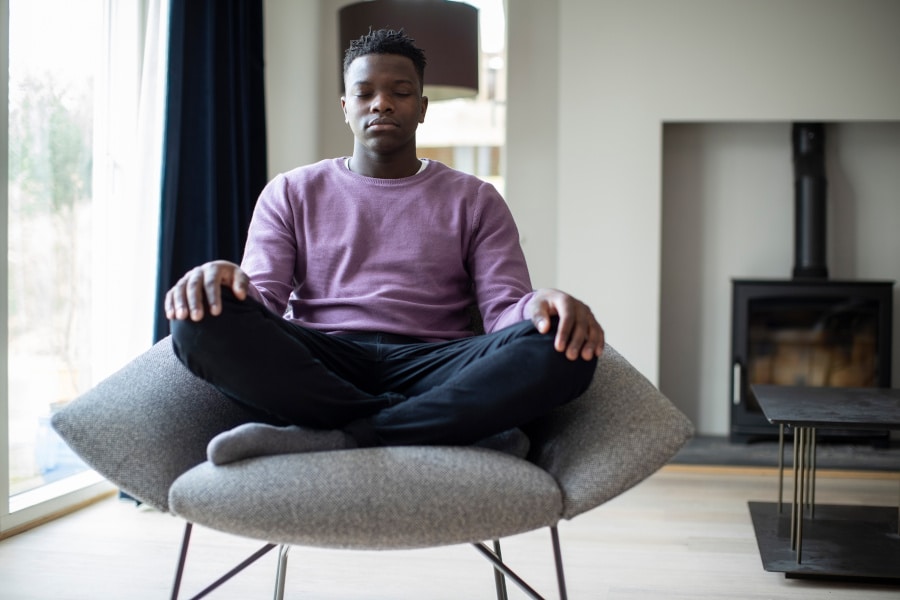
Nationwide stay-at-home mandates caused by COVID-19 had everyone spending more time inside and on their own. Before the extent of the 2020 lockdown orders played out, introverts thought their time had arrived. You could spend your time however you wanted with no pressure to attend any social events or spend time with people outside your household.
As time passed and the lockdowns didn’t lift, though, introverts realized the need for at least some balance in their lives. There’s a certain amount of safe alone time but after a while, it progresses into unhealthy isolation. The downsides of social isolation are not new but the collective experience of those negative effects is.
Are you struggling to find a balance between safe isolation vs. unhealthy isolation? There’s a line between the two and it’s crucial to know where that line exists for you. Even if you’re an introvert, you’ve probably reached a breaking point at least once or twice over the last year.
You have to maintain a healthy balance between your alone time and time spent with others. It’s even more important if you’re in mental health or substance abuse recovery. What are some signs you’re veering into unsafe territory? Now that some states are lifting stay-at-home orders, how can you shift away from an unhealthy level of isolation?
COVID-19 and Social Isolation
Plenty of research on the effects of social isolation existed before the COVID-19 pandemic. Researchers look at the impact isolation has on populations like the elderly or people in prison. What the pandemic managed to do, though, was bring social isolation and its effects to the masses.
Efforts to slow the spread of the virus brought the world to a sudden, grinding halt. Individuals who relied on social interaction to make it through their days were at a loss for what to do. Those who are more introverted enjoyed the increase of alone time at first until the negative effects took hold.
Still, the stay-at-home orders, social distancing, and quarantine mandates remained in place for months. People who never struggled with their mental health before noticed symptoms of anxiety and depression. Those with pre-existing mental illnesses noted a sharp increase in the severity of their symptoms.
Countless experts noted the ways COVID-19 highlighted the importance of social connection for extroverted and introverted alike. Reported rates of loneliness increased by up to 30 percent. Emotional distress tripled. And these numbers are only from preliminary studies; studies involving the ongoing extent of the problem have yet to be released.
The Importance of Alone Time
There’s nothing wrong with spending time alone. Whether you’re an introvert or an extrovert, it’s important that you take time for yourself to recharge. Alone time allows you to dive into the things you enjoy apart from your family, friends, and other loved ones. You get to decide what to do and when to do it.
Alone time is also necessary for self-reflection. Anyone working to be the best version of themselves benefits from quiet time spent in reflection. You’ll have a more fulfilling life when you slow down and think about the way you approach your days instead of running carelessly through them.
Self-care is another vital aspect of alone time. As the saying goes, “You can’t pour from an empty cup.” You aren’t going to operate at your best when you’re constantly feeling worn out and pushed to your breaking point. Alone time gives you the space for self-care practices like journaling, meditation, and exercise. You need time to yourself to implement these things.
Downsides of Social Isolation
Past and present studies reveal the extensive downsides of social isolation. There are many mental and physical health risks associated with loneliness. One meta-analysis showed that limited social connection increases health risks as much as smoking 15 cigarettes every day. The same analysis also showed that social isolation is twice as harmful as obesity.
The Centers for Disease Control and Prevention have plenty of data on the downsides of isolation. Loneliness also increases the risk of dementia by 50 percent, as well as the risk of premature death from all causes. It’s associated with higher rates of anxiety, depression, and suicide.
Newer research now considers isolation and loneliness within the context of COVID-19. One study from June of 2020 revealed some shocking statistics regarding the impact of social isolation caused by COVID-19. Of the U.S. adults surveyed at the time:
- 40 percent struggled with mental health or substance use
- 31 percent reported symptoms of anxiety or depression
- 26 percent experienced trauma or stress-related disorder symptoms
- 13 percent started or increased their substance or alcohol use
- 11 percent seriously considered suicide
These numbers show the incredible downside that comes with social isolation. Humans aren’t meant to be isolated for long periods. Every person, no matter how introverted, needs at least some interaction with other people.
Finding a Balance Between Safe and Unhealthy Isolation
Isolation, like every other part of life, is best when balanced. No matter how much of an introvert you might be, you need to find a balance between time alone and time with others. Every person has a line between safe and unhealthy isolation. It’s up to you to honestly determine where that line is in your life.
Introverts are at just as much at risk for the above downsides as extroverts are. Although you might enjoy more alone time than others, you also need interaction with people. There are surely some activities you enjoyed before the lockdowns were put in place. What are things you can integrate back into your life to reach that balance between safe and unhealthy isolation?
You don’t need to surround yourself with tons of people to get that necessary social interaction. Getting out of unhealthy isolation doesn’t mean you have to go to a party or gathering. All it takes is meeting up with a friend for coffee or a meal. Maybe it’s going for a long walk with a loved one. There are plenty of small things you can do while still interacting with those you care about.
Once you’ve had your fill of interaction you can return home to decompress and recharge. Do the things you enjoy doing on your own that leave you feeling refreshed and ready to see someone else. There’s no single way to balance safe vs. unhealthy isolation; you have to find a balance that works for you.
Staying Safe as You Reintegrate
You aren’t alone if you feel a bit nervous to get back to life as it was before the pandemic. Most people are experiencing at least some social anxiety now that things are starting to open back up. Are you struggling to break out of that isolation mode and reintegrate with friends, family, and loved ones?
It’s challenging to work through the anxiety of coming out of isolation. You might even feel you need additional support along the way. Clearview Treatment Programs understand the difficulties of managing your mental health as you make your way back into the world. If you’re looking for the support and structure of a treatment program, we can help.
Clearview Treatment Programs offer comprehensive individualized care for those struggling with mental health disorders. Through our residential, day, and outpatient treatment programs, you’ll learn the skills needed to reintegrate with your life as it once was. Get in touch with us to find out more about what we can do to help you today!





